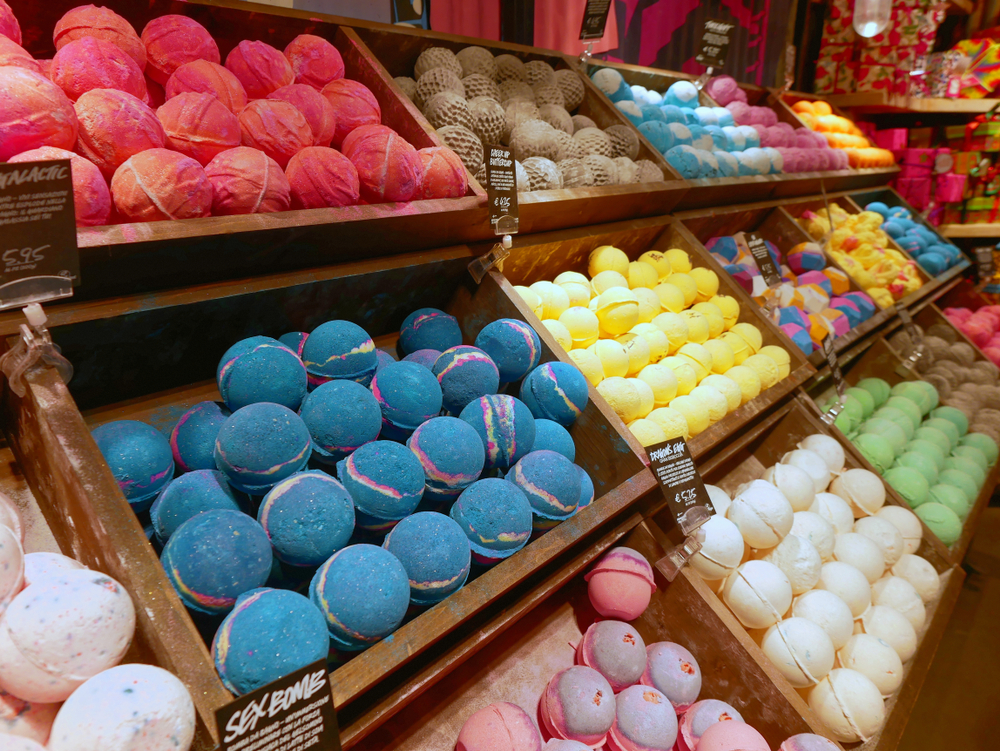Matthew Kay examines the sustainability juxtaposition of beauty industry advent calendars
Remember the days of buying an advent calendar for less than a fiver? We’re struggling, too. The last decade has seen confectionary brands throw an immense amount of cash to glorify the countdown to Christmas Day. Twenty-four festive treats line calendars that are bigger, bolder, and better than ever – and the beauty industry’s taken note.
The festive charm
Miniature cosmetics tucked away behind glittery doors could be found in more shop windows and sponsored Instagram posts than ever during the 2024 festive period. Beauty advent calendars are now the norm, with plenty of choice to accommodate budgets small and large. Brands embraced the craze of Black Friday to push sales higher, and more calendars popped up ready for resale on preowned or secondary sites. As soon as Halloween had passed, the likes of Glamour and Vogue ramped up coverage of the ‘best’ calendars – Vogue Editors reviewed no less than 44 in just one piece.

Calendars promised consumers the ‘glow’ whilst assuring value. Yet as each golden quarter transitions to a greener one, you can’t help but feel there’s quite the juxtaposition. We’re told (and we know) that the modern beauty customer prioritises sustainability when making a purchase. But 24 miniature beauty products give way to a haul of packaging, from plastic bottles and glass jars to boxes wrapped in shiny cellophane.
It’s not only cosmetics gifts these calendars brought us at Christmas – valuable lessons in sustainable beauty packaging were tucked away for 2025, too.
An ugly truth
And to say they’re needed is an understatement. Fortunately, the cosmetics industry has never been one to downplay the sustainability challenge, particularly when it comes to packaging. How beauty products are presented holds an immense amount of influence over consumers deciding between one product and another. But balancing aesthetic appeal with sustainability is cosmetics packaging’s imperfection.
The British Beauty Council tells us:
- 95 percent of cosmetics packaging is thrown away.
- Only 14 percent of packaging makes it to a recycling plant…
- …where just nine percent is recycled – the rest goes to landfill.
Clean beauty and naked packaging
However, these stats haven’t fallen on deaf ears. Clean beauty is a trend that has taken off recently, and it’s set to continue dominating in 2025. Consumers are embracing products that boast organic, non-toxic ingredients with cruelty-free testing, ready to be packaged in recyclable or reusable materials.

Taking it a step further, and naked packaging – something Lush (below) has long been nailing – is having a well-deserved moment in the make-up chair. That’s one of the reasons it’s so interesting how 2024’s beauty advent calendars seemingly bucked the ‘all eyes on sustainability’ trend.

Eco-creds of beauty advent calendars
Now, that’s not to say all advent calendars ended up in landfill come New Year’s Day (and it’s certainly not to say only beauty had a part to play, here). By and large, advent calendars rely on cardboard as the structure’s base. When consumers see cardboard (or similar materials, like paper), they tend to associate it with sustainability – consciously or not.
In its natural form, cardboard is recyclable. It’s often made from recycled fibres, too. But does this association mean consumers are naive to the unsustainable materials that also make up the products? Be that the plastic cosmetics containers behind each window or the toxic inks used to coat a brand’s colours onto the outside of the calendar. Maybe, maybe not. Maybe it’s as simple as being swept up in the magic of Christmas and how beauty advent calendars have transitioned to a must-have rather than a want.
A makeover to celebrate
That’s certainly not to say all cosmetics advent calendars are bad for the environment, or otherwise. Beauty Pie’s ‘Super Beauty Holiday Haul’ bucks the traditional doors and drawers of a calendar, opting instead for a drawstring tote bag to house its surprises. The package is intended to serve its purpose far beyond Christmastime – so, too, is one of the makeup products that could found inside.
The refillable eyeshadow palette is a conscious nod towards cosmetic’s sustainability efforts, something that’ll hopefully be another ‘new norm’ come December 2025. But last Christmas, it still felt like the anomaly.
The bottom line
Encouraging consumers to celebrate advent is certainly a money maker for the industry, imperative for businesses still absorbing the impact of the new Labour government’s budget. Consumer interest remained strong, with October 2024 seeing searches for the beauty boxes up 15 percent on 2023. Demand was reflected by brands – Space NK produced 30 percent more stock for Christmas just gone than 2023, though their calendars still managed to sell out in just two and a half weeks!
But, if UK cosmetics wants to ride the clean beauty trend this year and beyond, a makeover’s needed. Starting with sustainable beauty advent calendars.
Packaging psychology
Psychologically, we associate earthy tones and materials with nature. Sustainable packaging designs tend to veer towards these colours if not fully embracing the natural colour of a material itself (think brown twine).
It aligns with the ‘no-make-up make-up’ trend that’s all the rage. As influencers and consumers seek products to achieve the best ‘natural glow’, there’s prime opportunity for beauty brands to boost the appeal of their cosmetics further.
Clean beauty can be reflected in ‘clean’ advent calendars that:
- Are made from responsibly sourced materials
- Prioritise recyclable, reusable, or biodegradable packaging
- Reflect the brand’s sustainability agenda and values
Sustainable beauty calendars couldn’t be timelier, either. 2025 needs more cosmetics brands to commit to 100 percent recyclable packaging in line with the UK Plastics Pact, which is pushing sustainable change forwards. Extended Producer Responsibility will also shake up the advent calendar scene. From Q4, beauty brands will have more responsibility over the costs associated with the waste generated from their products’ packaging, meaning designs and materials will need to go back to the drawing board.
Though it’s far too premature to start counting down the days to opening the first window of this year’s advent calendars, let’s not be too late in pushing open the windows to making 2025’s festivities greener.
Matthew Kay is the Head of Design and Marketing at Greyhound Box, a leading manufacturer and supplier of sustainable corrugated cardboard packaging solutions.






